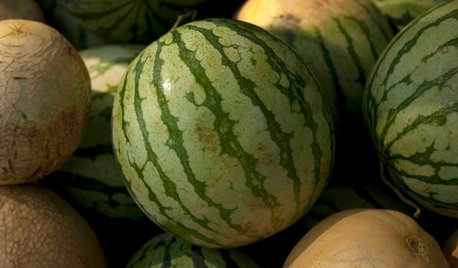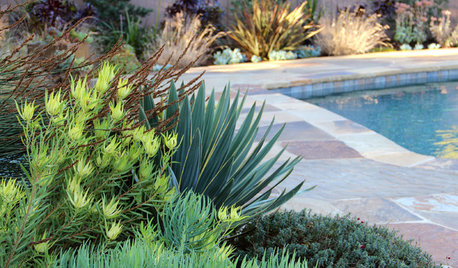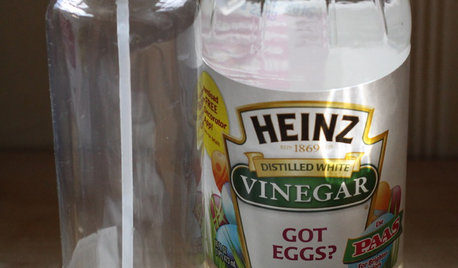Should I water my melons or not?
gamebird
14 years ago
Related Stories

GARDENING GUIDESSummer Crops: How to Grow Melons
Drink in the refreshing sweetness of melons from your own garden this summer — they can last well into fall too
Full Story
GARDENING GUIDES9 Ways to Be Water-Wise in the Edible Garden
Consider these tips to get a healthy backyard crop that uses less water
Full Story
GARDENING GUIDESGreat Design Plant: Anemone Canadensis Adds Pizzazz to Water’s Edges
Plant Canadian anemone along pond, lake or stream edges for a splash of white flowers in late spring
Full Story
HOUZZ TOURSHouzz Tour: Creative Cabin on The Water
San Francisco Bay Area Home is Filled With Found and Handmade Treasures
Full Story
FUN HOUZZEverything I Need to Know About Decorating I Learned from Downton Abbey
Mind your manors with these 10 decorating tips from the PBS series, returning on January 5
Full Story
PLANTING IDEAS7 Stunning Plant Combinations for Low-Water Gardens
Find inspiration in these beautiful drought-tolerant companion plantings
Full Story
CONTAINER GARDENSContainer Garden Basics: How and When to Water Potted Plants
Confused about soil moisture, the best time to water and what watering device to use? This guide can help
Full Story
HOUSEKEEPINGMagic Solution for Hard Water Stains
Vanquish evil hard water stains with this inexpensive, fast-acting and all-natural ingredient. And it's probably right in your cupboard
Full Story0

DISASTER PREP & RECOVERY7 Initial Steps for Dealing With Floodwater Damage
How you handle your flooded home and its contents can affect not only the damage level but also your personal safety
Full StoryMore Discussions







Okiedawn OK Zone 7
p_mac
Related Professionals
Arlington Landscape Architects & Landscape Designers · Beavercreek Landscape Architects & Landscape Designers · Quincy Landscape Architects & Landscape Designers · Towson Landscape Architects & Landscape Designers · Dallas Landscape Contractors · Framingham Landscape Contractors · Huntington Landscape Contractors · Lewisville Landscape Contractors · Pueblo West Landscape Contractors · Saint John Landscape Contractors · South Lyon Landscape Contractors · Alexandria Decks, Patios & Outdoor Enclosures · Hayward Decks, Patios & Outdoor Enclosures · Hull Decks, Patios & Outdoor Enclosures · Lebanon Decks, Patios & Outdoor EnclosuresgamebirdOriginal Author
soonergrandmom
Okiedawn OK Zone 7
ilene_in_neok
soonergrandmom
Okiedawn OK Zone 7
ilene_in_neok